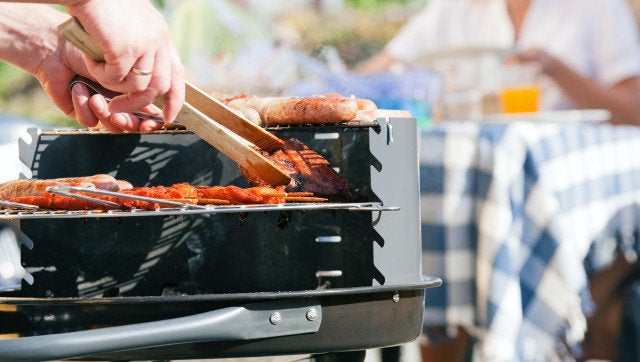
An armload of bulgogi covers the grill and a circle of friends surround the barbecue. Everyone has a pair of chopsticks in hand and turns slices of sizzling beef. A picnic table is laden with platters of pindaettok, mandu, heaping bowls of kimchi, chap chae and romaine lettuce leaves with red bean sauce for dipping. There is plenty of sliced watermelon of course, and three rice cookers stand ready in a row.
There is laughter around the table. After another helping of dry cuttle fish, after we eat as much food as we can hold, we find a grassy spot under a shady tree, pull out a folk guitar, stretch back on the grass and sing. The familiar melody has me humming along, while the group sings the lyrics in Korean. Most of the time I forget that my husband, our youngest daughter and I are the only ones who are not Asian. At these gatherings all my friends are Korean American, like two of my children. The afternoon leaves me with a contented feeling, a sense of belonging, like I have when I go to a family reunion.
However, my friends within the Korean American community didn't feel like family in the beginning, way back when we first became involved in 1987, when my kids were then 4, 6 and 10. Two of my children were adopted from Korea. I needed to reach deep with faith, because in giving my kids the opportunity to grow up within an all-Asian group I also had to let go of them a little bit in order to allow them to find their place within the Korean American community.
I wanted my children to have the same opportunity to discover their identity as I did growing up mixed-blood Native American within Indian country. The difference is that Korean culture was initially unfamiliar to me; we were making new friends and I was allowing them to take my children into a world unknown to me.
But I remember my grandmother's words. "Child," she said, "We're Indians, and our Cherokee, Delaware and Seneca culture has been scattered into odds and bits, yet Indian people are determined to keep our life ways alive."
I wanted to give my kids what was given to me, to make it possible for them to gather pieces of Korean American culture and braid it into our lives, to show them how to hold their heritage high.
While my son and my oldest daughter explored the constantly evolving questions of what it means to be Korean American and my younger daughter -- who is Cherokee, Delaware, Seneca and Irish -- grew increasingly more aware and diverse, my husband and I sank in roots. We worked to build lasting relationships and to let our new friends know that our interest in doing so was heartfelt. Over the years, our Korean community gatherings have provided me with some of the deepest sharing I've ever known.
At the picnic we rest just long enough for our food to settle, and then it is time to play games. There are sack races, three-legged races and a water balloon toss followed by a scavenger hunt. Everyone plays -- the grandmas and grandpas, even babies are encouraged to join in -- and there is always someone willing to lend a helping hand.
I find it wildly wonderful that fancy equipment is not needed for our game playing. We have a ball, a blindfold, two gunnysacks and we have each other. It's a day of slowing down and relaxing in the park, of just enjoying one another's company. And I'm thankful for that.
Terra Trevor is the author of the memoir Pushing up the Sky: A Mother's Story, from which this essay is adapted.